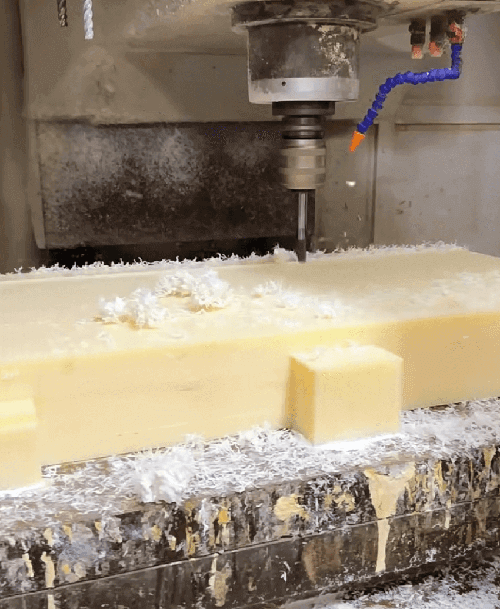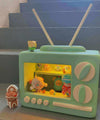If you are looking for a durable, versatile, and easy-to-use material for your project, you might want to consider ABS plastic block. ABS stands for acrylonitrile butadiene styrene, a thermoplastic polymer that can be molded into various shapes and sizes. ABS plastic block is widely used for applications such as pipe supports, orthotic devices, machine parts, and more. You can find ABS plastic block in different forms such as abs sheet, abs sheet 4x8, abs sheet lowes, and so on. In this article, we will show you how to choose the right ABS plastic block for your project and how to use it effectively.

There are many types of plastics available in the market, each with its own properties and applications. How do you know which one is best for your project? Here are some factors to consider when choosing a plastic material:
- Strength: How much force can the plastic withstand without breaking or deforming?
- Impact resistance: How well can the plastic resist shocks or impacts?
- Heat resistance: How well can the plastic withstand high temperatures or exposure to fire?
- Chemical resistance: How well can the plastic resist corrosion or degradation by chemicals or solvents?
- UV resistance: How well can the plastic resist fading or cracking by sunlight or UV rays?
- Flexibility: How easily can the plastic be bent or shaped without breaking or losing its properties?
- Cost: How much does the plastic cost per unit or per volume?

One of the most common and versatile plastics is ABS plastic. ABS plastic has many advantages such as:
- High strength and impact resistance: ABS plastic can withstand high levels of stress and force without breaking or cracking. It can also absorb shocks and impacts without shattering or denting.
- Good heat resistance: ABS plastic can withstand temperatures up to 80°C (176°F) without melting or deforming. It can also resist exposure to fire for a short time without burning or emitting toxic fumes.
- Good chemical resistance: ABS plastic can resist corrosion or degradation by most acids, bases, oils, and solvents. It can also resist staining or discoloration by most substances.
- Easy to machine and mold: ABS plastic can be easily cut, drilled, milled, sawed, and sanded with common tools. It can also be easily molded into various shapes and sizes with injection molding, extrusion, or vacuum forming.

- Low cost: ABS plastic is relatively cheap compared to other plastics. It is also widely available in different forms and colors.
However, ABS plastic also has some disadvantages such as:
- Poor UV resistance: ABS plastic can fade or crack when exposed to sunlight or UV rays for a long time. It may also become brittle or yellow over time.
- Poor solvent resistance: ABS plastic can dissolve or swell when exposed to certain solvents such as acetone, benzene, or chloroform. It may also lose its strength or shape when exposed to these solvents.
- Flammable: ABS plastic can catch fire easily when exposed to high temperatures or flames. It may also emit toxic fumes when burned.
If you want to use ABS plastic for your project, you need to make sure that you are buying the right material. There are many types of plastics that look similar to ABS plastic, but have different properties and applications. How can you tell if a plastic block is made of ABS plastic? Here are some tips to help you identify ABS plastic:
- Look at the color: ABS plastic is usually black or white, but it can also be dyed into various colors. If you see a plastic block that has a bright or unusual color, it may not be ABS plastic. You can also look for the recycling symbol on the plastic block. ABS plastic is usually marked with the number 7 or the letters ABS inside a triangle.
- Feel the texture: ABS plastic has a smooth and glossy surface that feels hard and rigid. It may also have a slight grainy or sandy texture due to the blending of different materials. If you feel a plastic block that has a rough or matte surface, or that feels soft or flexible, it may not be ABS plastic.
- Smell the odor: ABS plastic has a distinctive smell that is similar to burnt plastic or nail polish remover. You can try to scratch or heat up a small part of the plastic block and smell it. If you smell a strong or unpleasant odor, it may be ABS plastic. However, this method is not very reliable, as some plastics may have similar smells or no smell at all.
- Test the solubility: ABS plastic can dissolve or swell when exposed to certain solvents such as acetone, benzene, or chloroform. You can try to apply a small amount of these solvents on a hidden part of the plastic block and see if it reacts. If you see the plastic block dissolving or swelling, it may be ABS plastic. However, this method is not very safe, as these solvents are flammable and toxic. You should wear gloves and goggles and work in a well-ventilated area when using these solvents.

These are some of the ways to identify ABS plastic by its appearance, texture, smell, and solubility. However, the best way to confirm the type of plastic is to ask the seller or manufacturer for the product specifications or data sheet. This way, you can be sure that you are buying the right ABS plastic block for your project.
One of the advantages of ABS plastic block is that it is easy to machine and mold. You can use common tools such as saws, drills, heat guns, etc. to cut, shape, and bend ABS plastic block according to your project needs. Here are some tips on how to do that:
- How to cut ABS plastic block: You can use a hand saw, a circular saw, a jigsaw, or a band saw to cut ABS plastic block into smaller pieces or shapes. You should use a fine-toothed blade and a low speed to avoid melting or chipping the plastic. You should also clamp the plastic block securely to a workbench or table and wear safety glasses and gloves when cutting. You can also use a ruler and a marker to mark the cutting lines on the plastic block before cutting.
- How to shape ABS plastic block: You can use a drill, a mill, a lathe, or a router to shape ABS plastic block into more complex or precise shapes. You should use a sharp bit and a moderate speed to avoid overheating or cracking the plastic. You should also secure the plastic block firmly to a vise or a chuck and wear safety glasses and gloves when shaping. You can also use a template or a stencil to guide the shaping process.
- How to bend ABS plastic block: You can use a heat gun, a hot air oven, or a hot water bath to bend ABS plastic block into curved or angled shapes. You should heat the plastic block evenly and slowly until it becomes soft and pliable. You should also wear heat-resistant gloves and use a mold or a jig to hold the plastic block in the desired shape until it cools down and hardens. You can also use a protractor or a compass to measure the bending angle.

These are some of the ways to cut, shape, and bend ABS plastic block with common tools. However, you should always follow the manufacturer’s instructions and safety precautions when using these tools. You should also check the quality and accuracy of your work before proceeding to the next step.
After you have cut, shaped, and bent ABS plastic block for your project, you need to store and handle it properly to ensure its quality and durability. Here are some tips on how to do that:
- Store ABS plastic block in a cool and dry place: You should avoid exposing ABS plastic block to high temperatures or humidity, as they may cause the plastic to melt, warp, or crack. You should also keep ABS plastic block away from direct sunlight or UV rays, as they may cause the plastic to fade, yellow, or brittle. You can store ABS plastic block in a sealed plastic bag or a cardboard box, and place it in a cool and dry place such as a closet, a basement, or a garage.
- Handle ABS plastic block with care: You should avoid dropping, scratching, or denting ABS plastic block, as they may damage the surface or the structure of the plastic. You should also avoid applying excessive force or pressure on ABS plastic block, as they may cause the plastic to break or deform. You should wear gloves and use soft cloths or pads when handling ABS plastic block, and lift it with both hands or use a cart or a dolly when moving it.
- Clean ABS plastic block regularly: You should clean ABS plastic block regularly to remove any dust, dirt, grease, or stains that may accumulate on the surface of the plastic. You can use a mild soap or detergent and a soft cloth or sponge to wipe the plastic gently. You can also use a soft brush or a vacuum cleaner to remove any loose particles or debris. You should avoid using any abrasive or harsh cleaners or solvents that may scratch or dissolve the plastic. You should also dry the plastic thoroughly after cleaning it.

These are some of the ways to store and handle ABS plastic block properly to avoid damage, deformation, or contamination. However, you should always follow the manufacturer’s instructions and safety precautions when storing and handling ABS plastic block. You should also check the condition and quality of your ABS plastic block before using it for your project.
If you are interested in buying ABS plastic blocks to complete your project, you can visit our website: www.beeplastic.com or click on our contact form, fill in the information to disturb us, we can find you ABS blocks in various forms and sizes. We will give you the best discount.
Thank you for hearing us out. Hopefully you have some new or useless knowledge about ABS plastic blocks. If you have any new boring ideas, feel free to leave a comment below. We'd love to hear from you.
🎉🎉🎉Limited Time Offer Use code: QR4GNY08SHVR at checkout and enjoy a special discount on your entire order! 👉 ABS plastic







